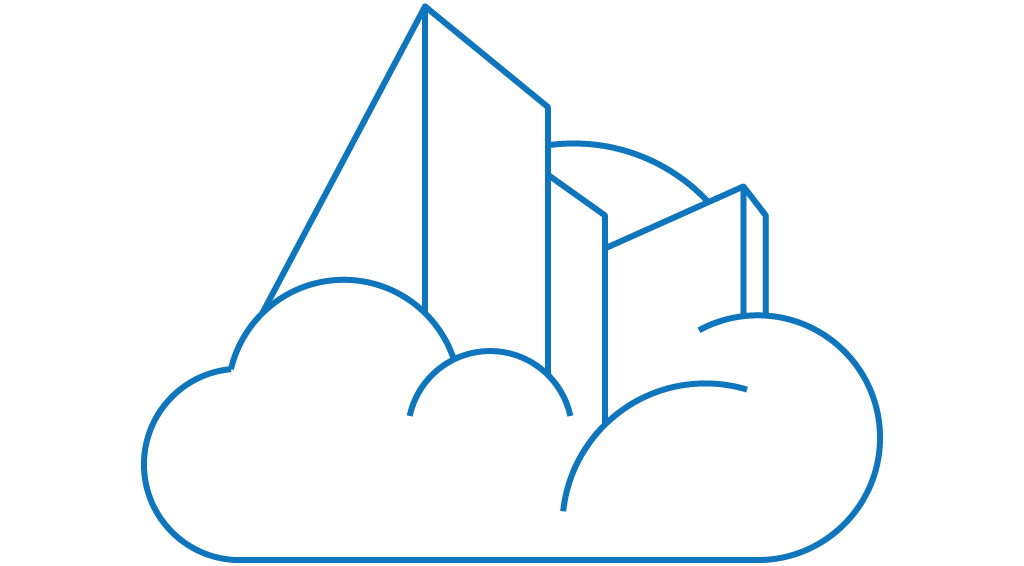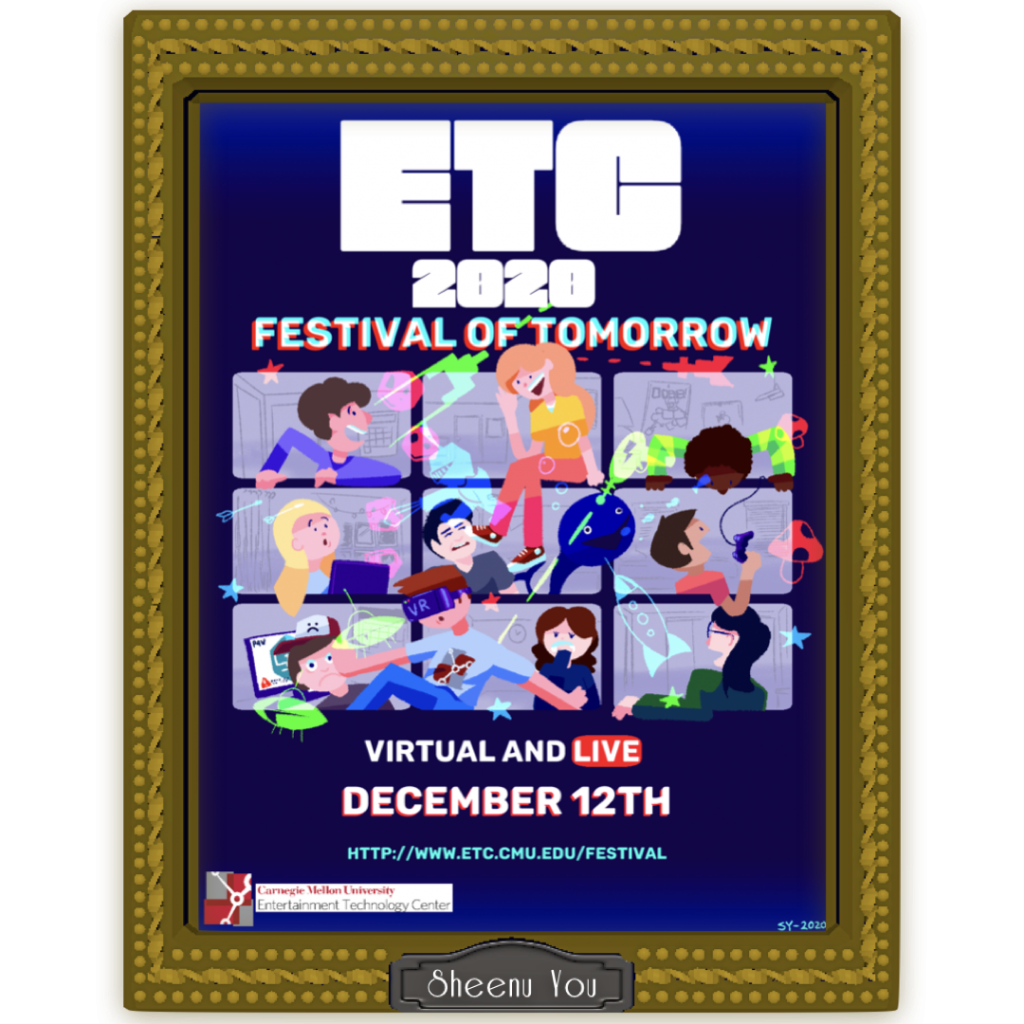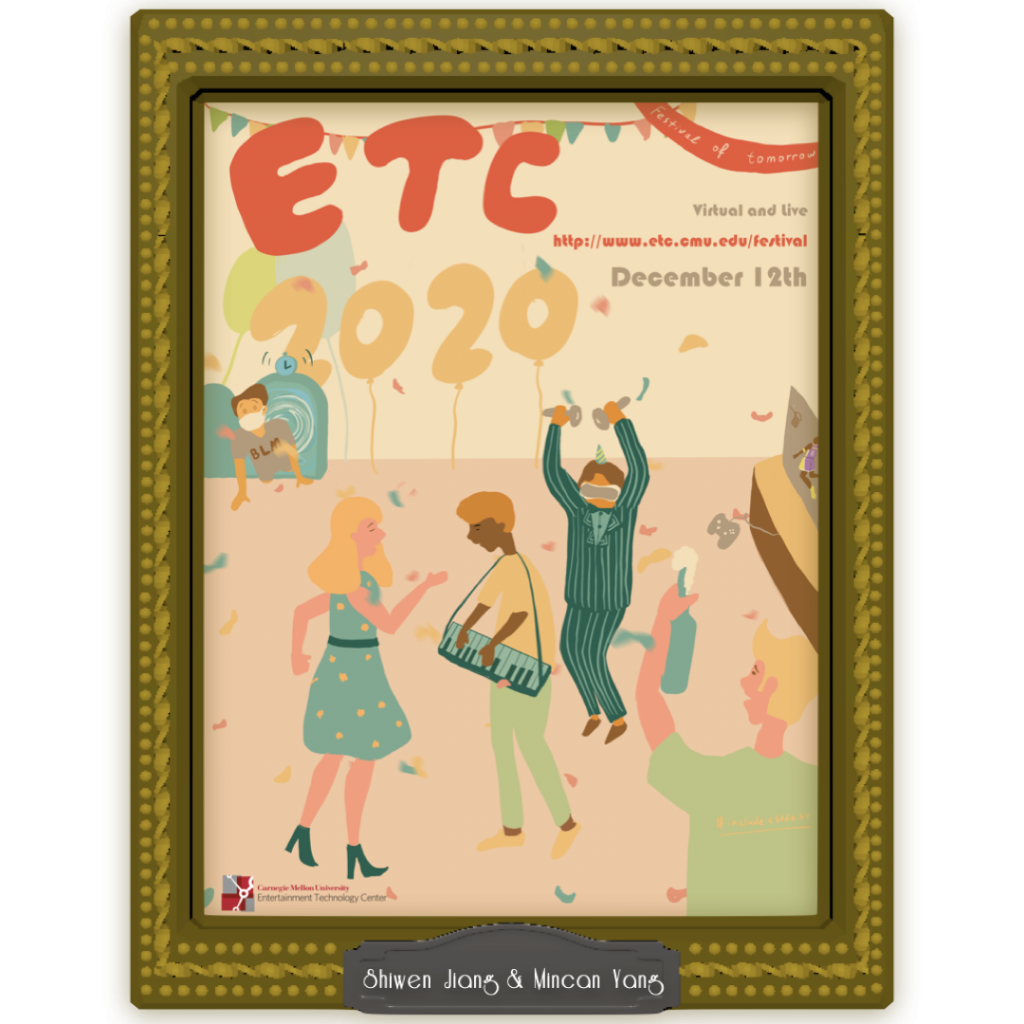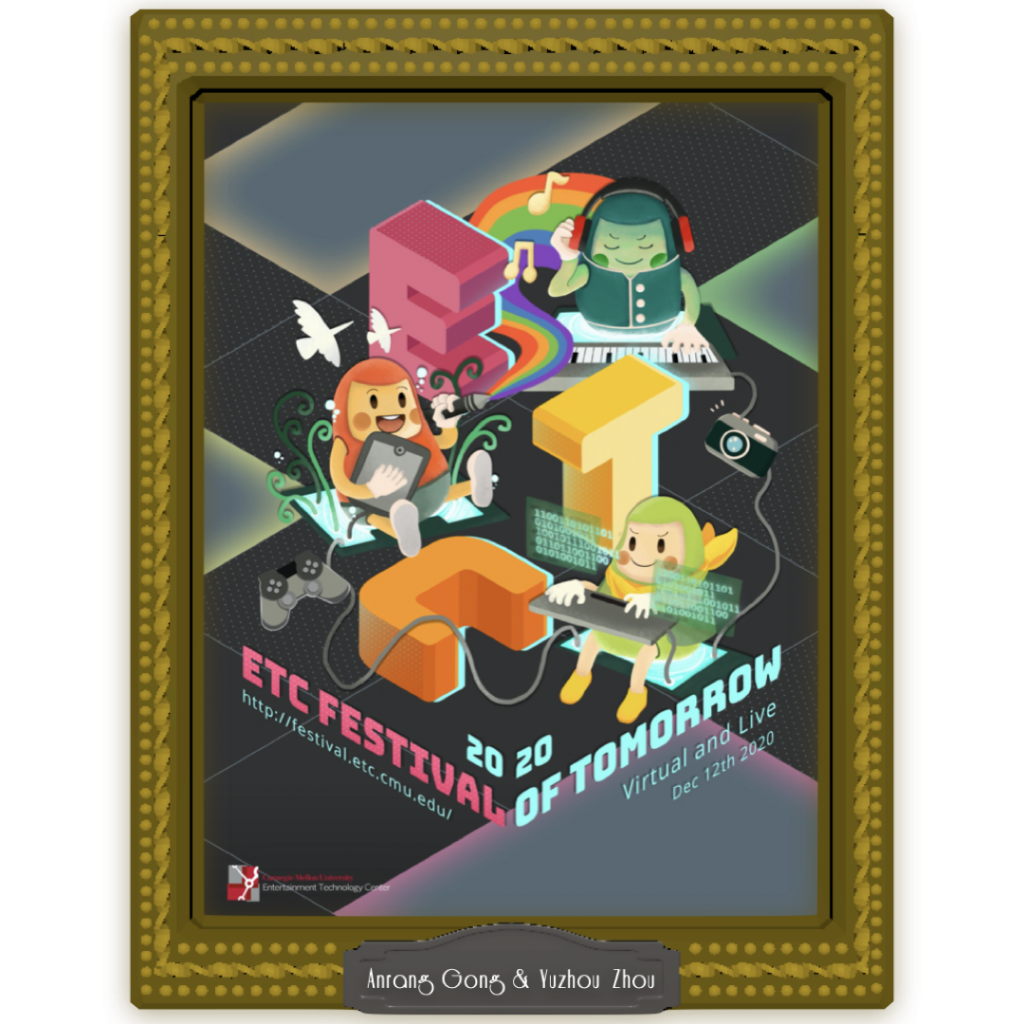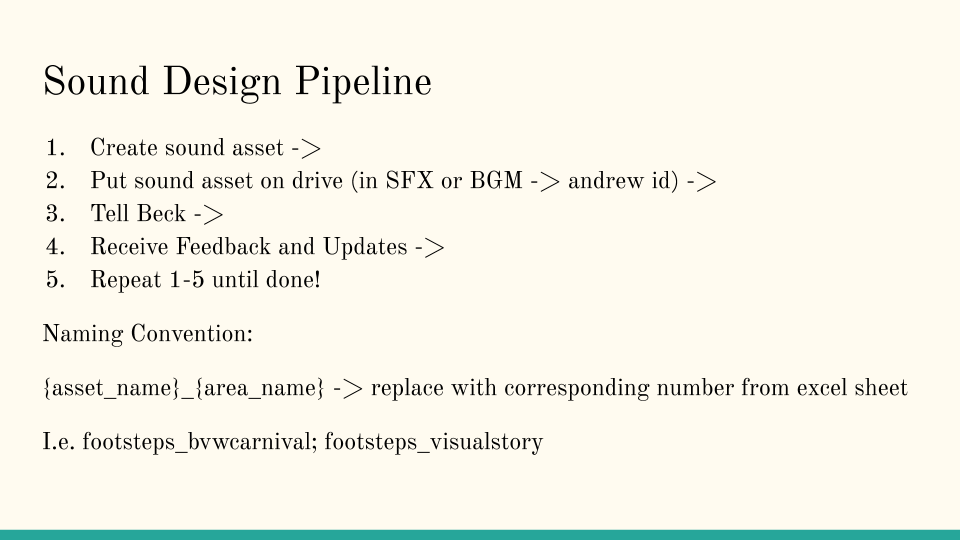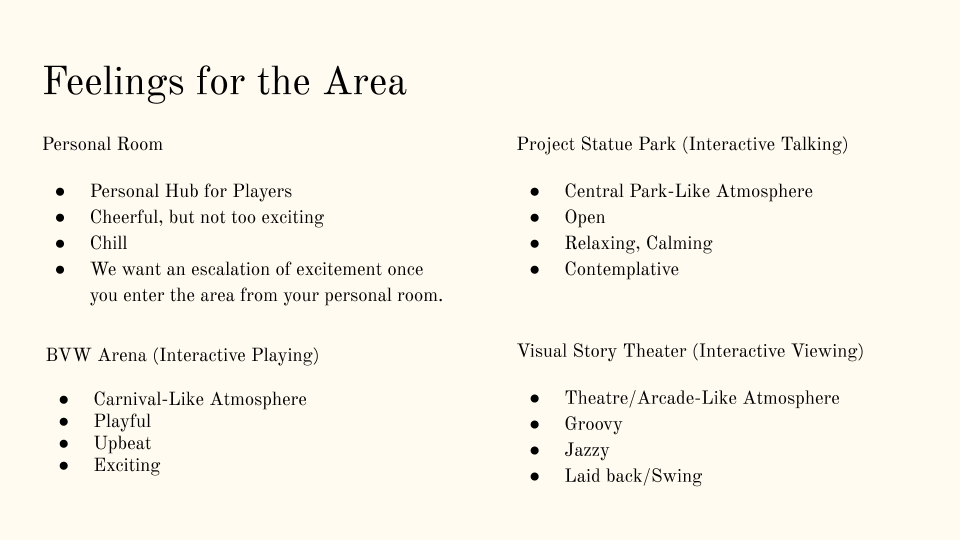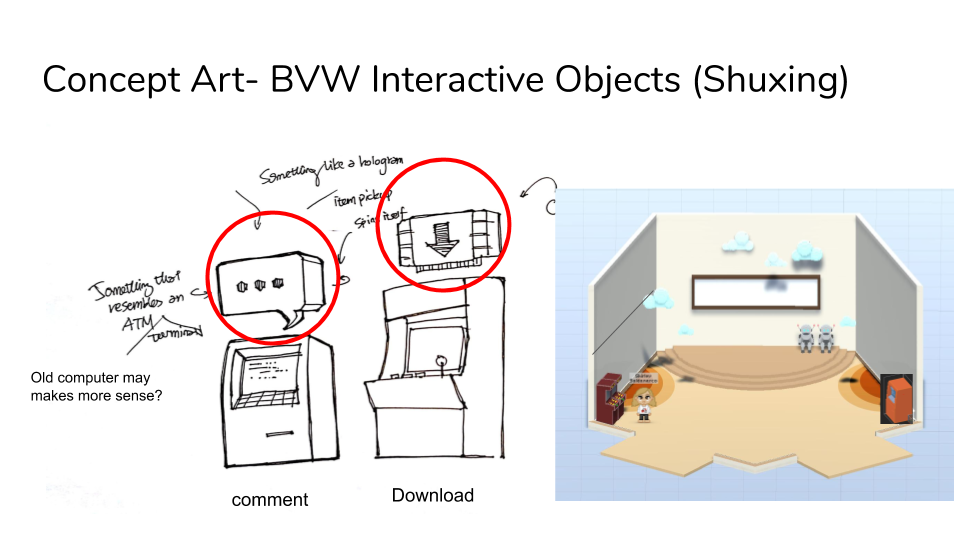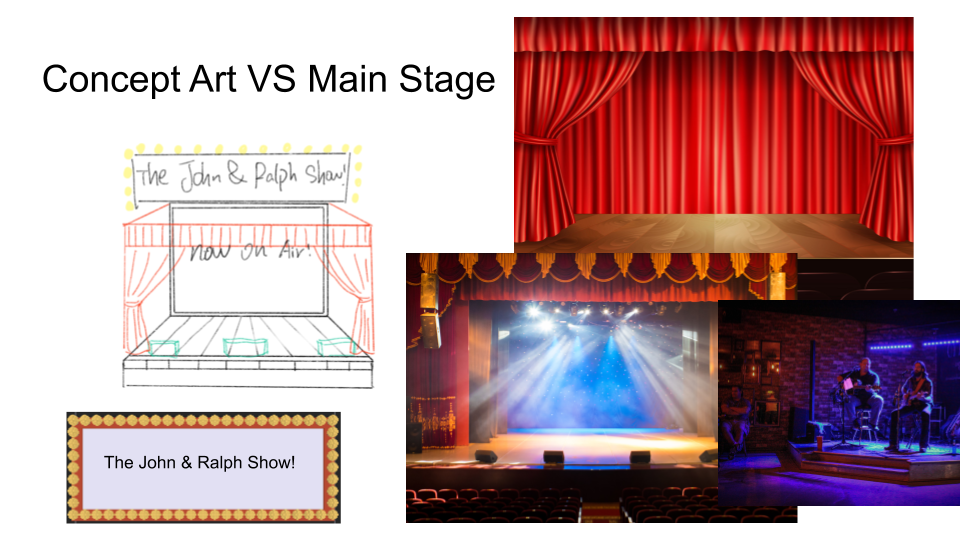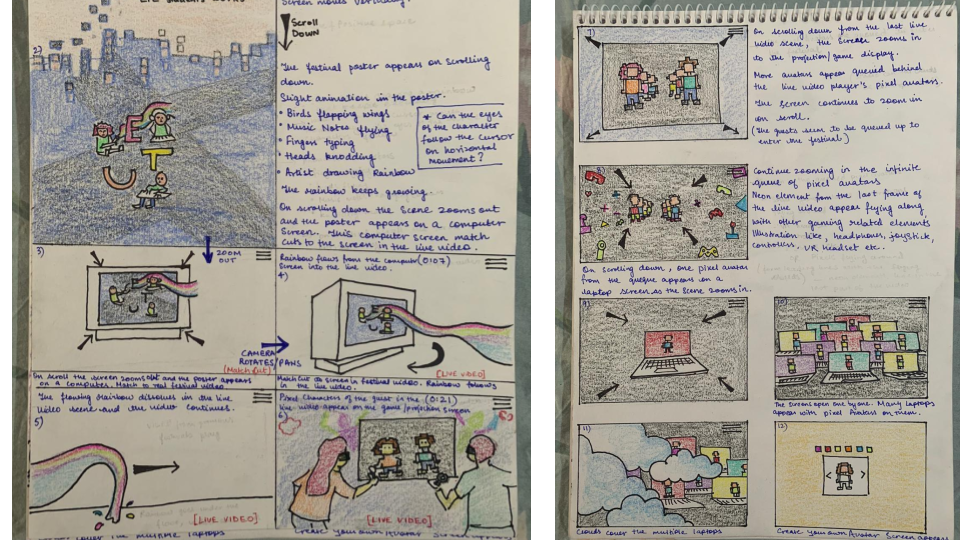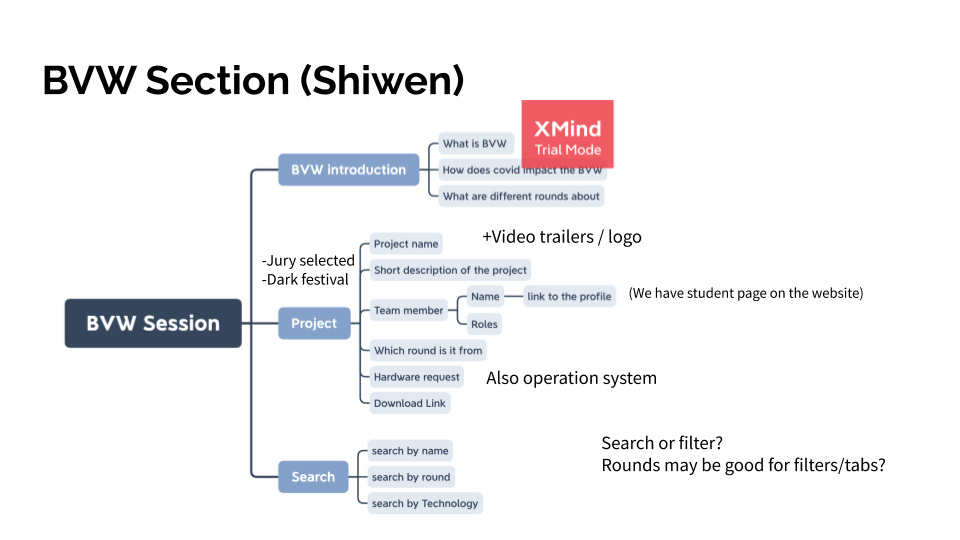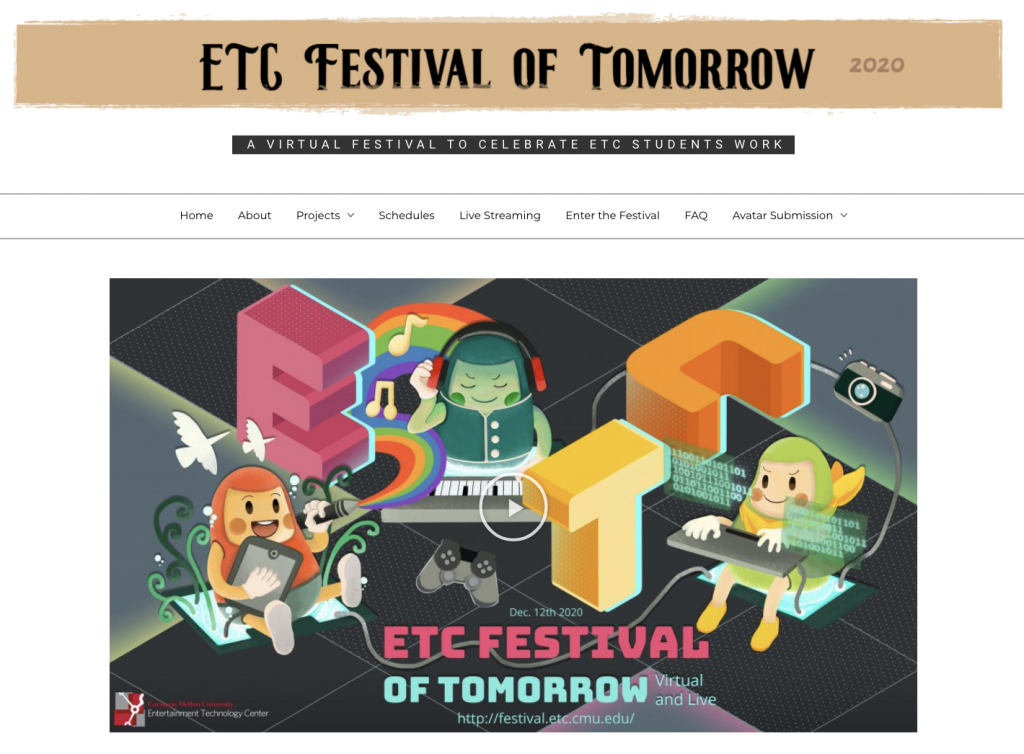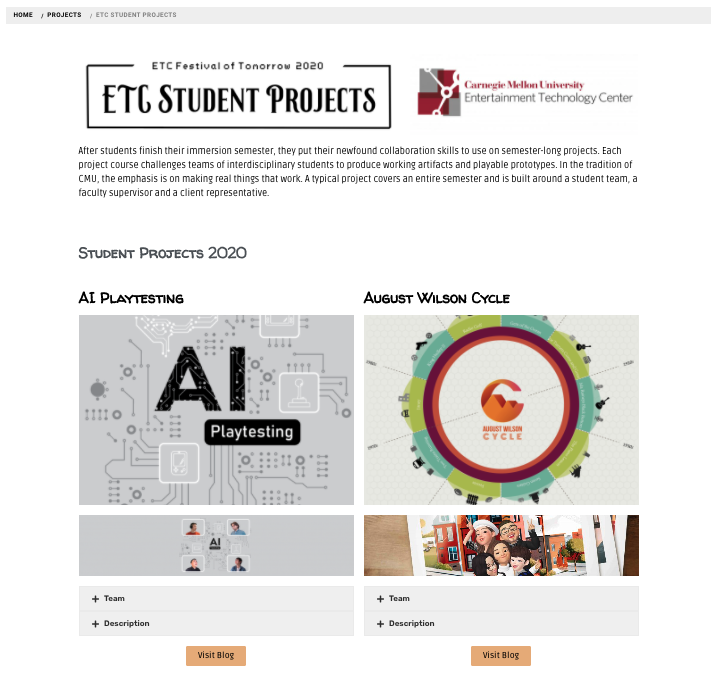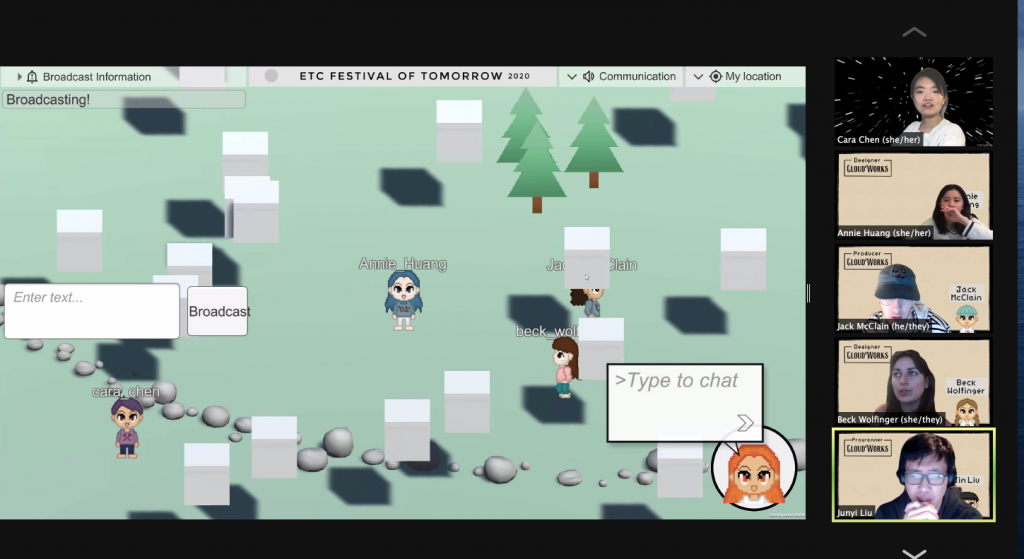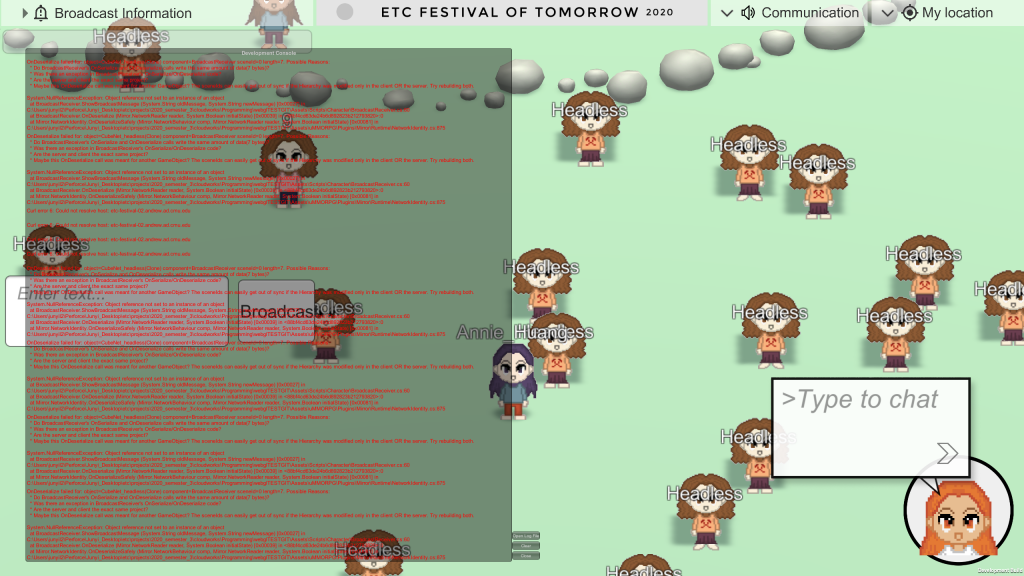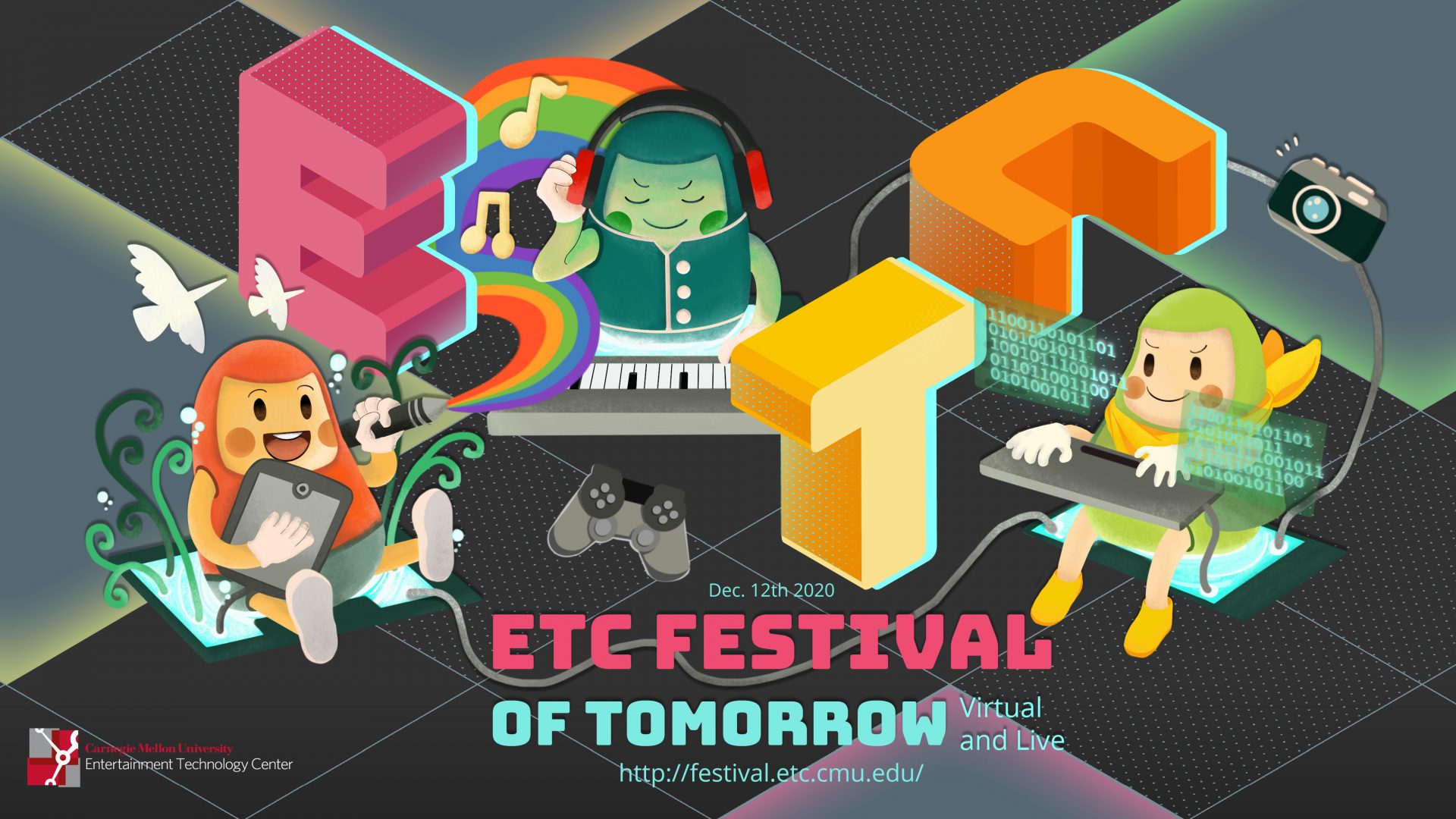
Week 9: Navigation
Event Planning
The first piece of good news that we received at the start of this week was the final approval of our proposed schedule of three, 3-hour long sessions taking place on Saturday December 12.
Along with this, on the event side we had submissions of festival posters to review and select with Caitlin and Janice. We looked at the three posters that were submitted and made our selection of the poster from Clare Zhou and Arianna Gong. They met with us following the selection to get notes about some changes that were required on the poster including updating the ‘BVW’ to saying ‘ETC’ and adding information regarding our website and schedule.
Navigation
We continued the discussion and brainstorming that began late last week around navigation, specifically as it was related to the BVW portion of the virtual space and the interior spaces associated with each project room.
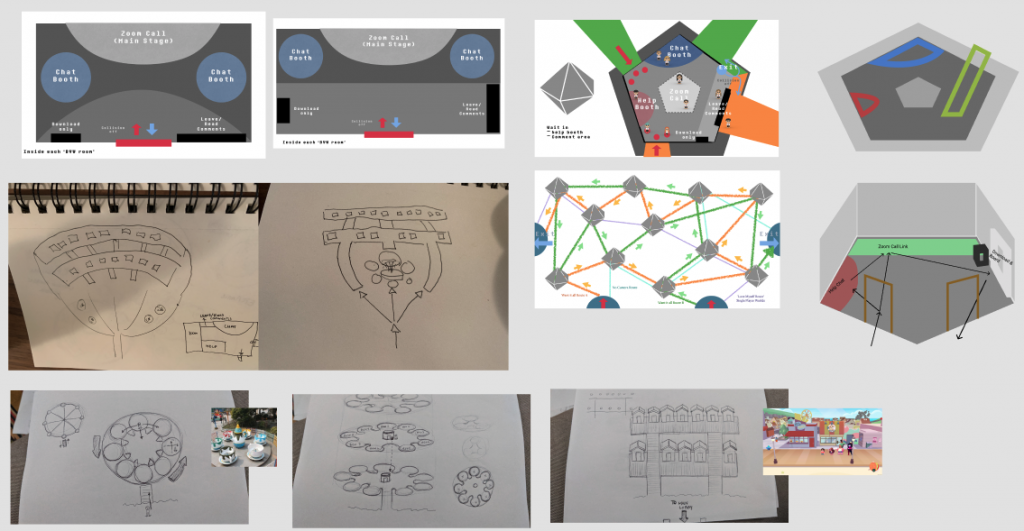
The requirements for each BVW room include a space to download a project from, a space to chat through voice, a space to enter a Zoom call, and a place to leave comments on the work. In order to spread out the guest flow and leave room for people to walk around, we’ve decided to spread these objects around the room in an arc, with the Zoom call link, the highlight of entering the world, easily accessible for multiple people at a time at the back.
Because of high traffic areas around the download button and entrance/exit, collisions must be turned off at the front half of the room so that people aren’t pushed out of the room and do not need to wait for people to get out of the way to access the download area for example. However, collisions must be on in the area for entering the Zoom call in order to trigger the call to launch and to limit the number of people who may enter a chat booth at any given time.
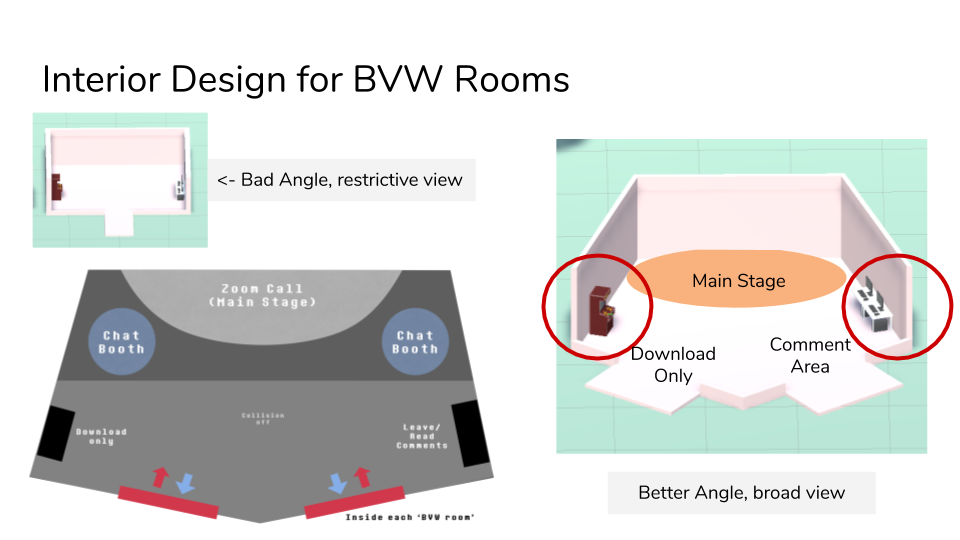
Because of the elevated view of the world and the need for BVW teams to eventually decorate these spaces with their own resources, the two side walls of the room are splayed out as if the room is a pentagon. Not only does this give a better sense of spatial awareness over the rigidly vertical straight on walls, but it also provides extra space within the room that the teams may decorate according to their desire.
Festival Committees
After sending out a survey to the first year students asking for them to join committees to help provide content for the festival itself, we had our first meetings for the website, sound, and environment art committees.
Each team of 2 to 6 is excited to contribute elements to the world including landmarks in the environment, background music for different areas, SFX, and UI elements on the website.
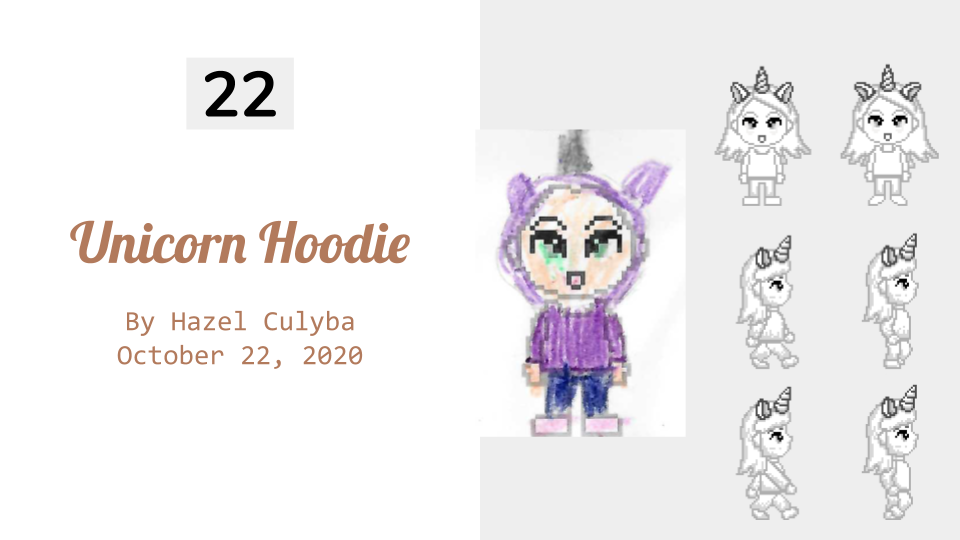
After consulting with Dave about his experience submitting an avatar asset for approval and creating the asset within Photoshop with our pipeline process, we have streamlined the experience a little and have it featured on our website front page as an open call for any submissions.
Website
On mentioning our website, the website is now up and active and currently in the progress of being updated with content for second-year projects and Visual Storytelling work. It can be seen here now and will be updated as we go!
Currently we have the overall hierarchy and set up of the website, and are really just waiting for the content to be collected to start populating in. Stay tuned!
Visual Storytelling
We met with John Dessler late in the week to discuss how we can best showcase his and Ralph’s course during the festival. When we had last spoken, they had kicked around the idea of having their own permanent Visual Story database that could be linked to for the festival and could be used in future years to hold all Visual Story content.
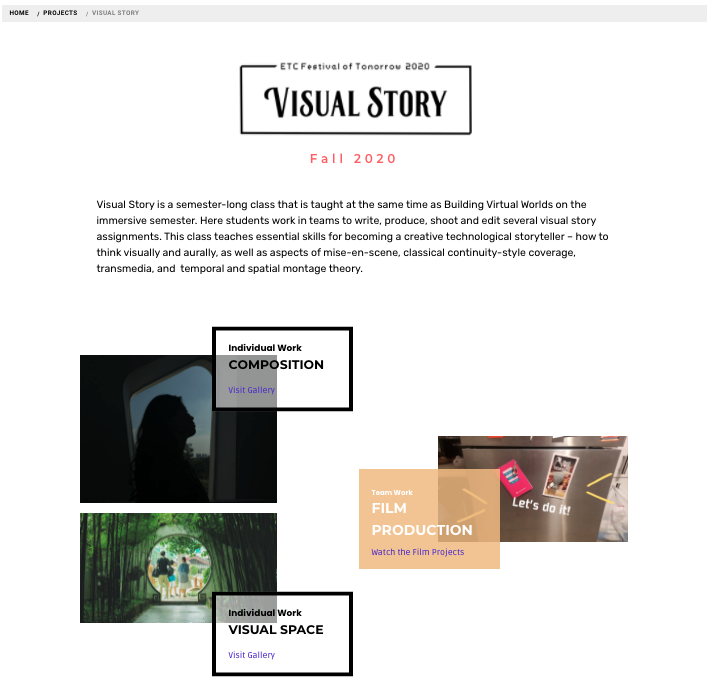
After this meeting, we’ve decided to hold all the Visual Story content from this semester on our website, including the composition photos, self-portraits, non-interactive videos uploaded on Vimeo, and interactive .exe’s uploaded to Dropbox.
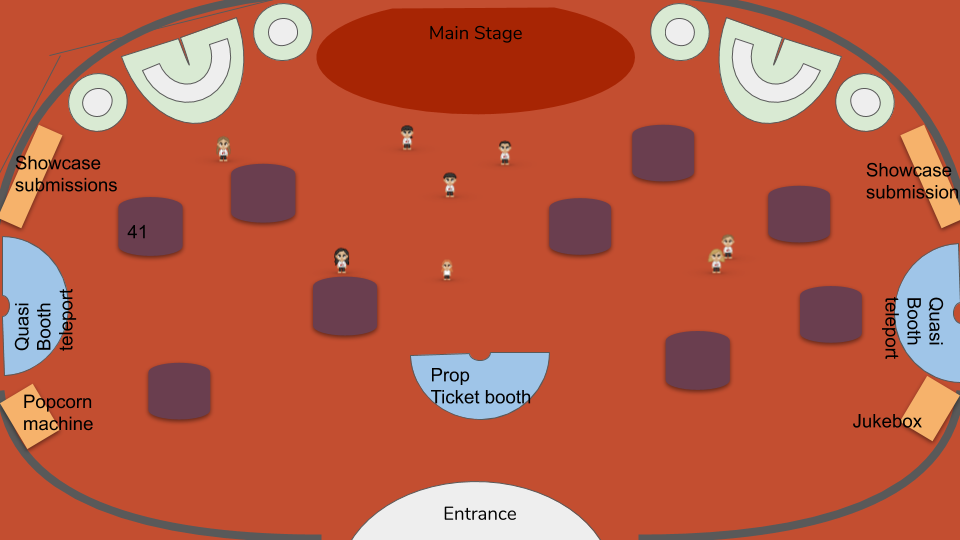
Within the virtual festival space, the projects will be featured in the Visual Story Theatre. The themes we are designing for in this space include nighttime, theatre, and retro, so we have a darker, red color palette with signage inspired by theatre marquee signs, and tables to move around similar to a cabaret show.
During the livestream sessions, when we go to feature the work of this class, Ralph and John will come on as guest hosts to talk about the work and showcase the interactive work especially, focusing on getting input on decision making from the viewing audience.
Stress Testing
Late in the week we did a stress test using a new version of the headless client that we used for stress testing a few weeks ago. This one runs 100 clients on a computer concurrently. We found that when we opened up four of these clients on different computers, the world began to lag and stutter due to the increased load put on the system, having so many users running in the lobby at once. Even when we lowered the number down to 300 we were still running into some lag.
We’ve been planning under the assumption that we can host up to 500 people per session using our current networking set up. Cutting it down to 300 guests at the most while also carving out affordances to faculty, staff and students, doesn’t leave enough room for guests to join.
Thankfully we’ve discovered this now, and we have a plan for how to redesign the world in such a way that will spread the load across the different areas of the world. Because of the servers that Steve has set up for us in the last week, we may be able to set up instances of the BVW Carnival, Visual Story Theater and the Project Park across these different servers, meaning each one will be able to accommodate roughly 300 each, expanding our allowance of guest number up to 900 spread out over all these.
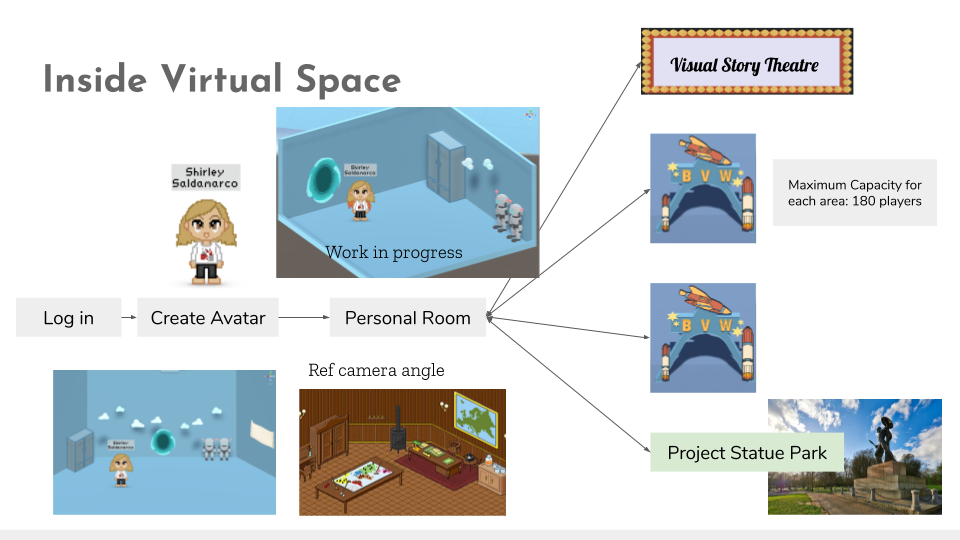
We’re going to reorganize the world around this plan over the weekend and try out another stress test on Monday. We are likely going to need to lower the upper limit of guests per session to ensure that we still have room for everyone to navigate around the space freely and not get locked out of a certain area due to it being full. We’ll see next week how this new organization will affect our gameplan.
Looking Forward
Next week, we’ll keep iterating on the environment and communicate with the BVW class to help them get familiar with the festival format to design their Round 5 Festival worlds. We’ll be meeting with second-year project teams to consult with them about how to showcase their work in the virtual space as we’ll as BVW Round 5 teams to consult on how to design a world for the virtual festival experience. We’ll also be touching in with the Visual Storytelling class to see their interactive projects and get a sense of what to expect to accommodate for there. Invitations are also set to go out next week, which is our exciting first moment of contact with guests.
